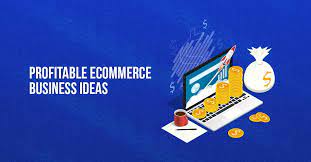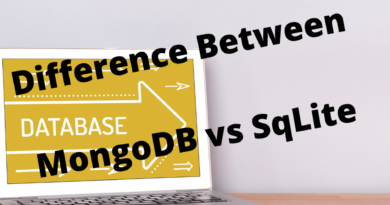7 Tested Techniques for Starting a Profitable Ecommerce Platform
Whether you want to start a dropshipping company or develop, produce, and sell your own products, it is critical to have the necessary information to build a thriving ecommerce business. Learn the 7 tried-and-true tactics you need to know to launch and expand your online company more quickly and easily.
Having an online presence is crucial if you want to be a great entrepreneur in today’s digital environment. Knowing how to set up your business for success is essential whether you’re starting a dropshipping company or planning to develop, manufacture, and sell goods.
Here are seven tested tactics for starting a successful online store to assist you in getting your ecommerce company up and running.
Step 1: Create a detailed business strategy.
A business plan must outline your strategy for success if you intend to start an online store. Here is a summary of the essential factors that need to be taken into account.
Executive summary — The executive summary should describe the mission, target market, products, and services offered by your business, as well as any desired outcomes. The overview should also include financial projections and any funding requirements, as well as details about the team’s important players.
Market analysis — The market analysis should outline your intended customer’s characteristics, behaviours, and preferences, among other things. Additionally, investigate rival companies, identifying their benefits while noting any drawbacks.
Product and service descriptions should give consumers a thorough rundown of all features, benefits, and advantages. Include information on how goods are developed as well as any related intellectual property.
The marketing and sales strategy section of your plan should include information on how you intend to promote and sell your good or service. Include profit-maximizing pricing strategies, economical delivery channels, and promotional strategies like advertising campaigns or loyalty programmes.
The fifth section of your company plan should be devoted to your operations strategy. This section should describe how you will handle customer service, logistics, and product manufacturing. Additionally, information about your team members and any partnerships or vendor collaborations should be mentioned.
The great thing about an e-commerce business is that you can easily combine your facilities, like third-party warehouses that send orders on your behalf and logistics programmes, with your website using plugins or apps. For instance, one of my companies, a photographic print shop, sells goods on Etsy. When a customer places an order, it is sent immediately to my print shop, which produces and completes the shipment, because I use a print-on-demand facility.
Bottom line: I only need to promote the company; everything else is up to me. This is a significant advantage of integrating technology and systems, as it makes your operation’s growth quicker and simpler.
Financial projections — The financial projections should be the last part of your business plan. This should include your income statement, balance sheet, and cash flow statement, as well as a comprehensive forecast of your expenses and revenue. Include details about your financial requirements and any possible funding sources.
Step 2: Select the appropriate platform
The logical next step after creating a thorough business plan is to choose an appropriate ecommerce platform to operate your online business. When choosing an ecommerce platform, it’s critical to weigh all of your choices. Despite being well-liked options, Shopify, WooCommerce, and Magento (now known as Adobe Commerce) each have particular benefits and disadvantages. To choose the best ecommerce platform for your online business, evaluate the needs and goals of your organisation, contrast different platforms, and consider your options.
Step 3: Invest in a powerful brand.
If you want to differentiate your company from the competition and attract loyal consumers, building a strong brand is essential for any ecommerce business. Here are some pointers to get you going.
Define your brand identity. The first step in creating a strong brand for your e-commerce company is to express your distinctive identity. The name, logo, colour scheme, tone of speech, and other visuals/words used to represent your business will all communicate your brand to the general public.
Conduct market research. Market research can give you priceless insights into the needs, preferences, and challenges of your target market. This aids in creating a memorable brand that connects with customers and stands out from rivals.
Make your logo; it serves as the focal point of your company identity. To develop a professional logo for your company, you can use online tools like Canva or hire a freelance graphic designer on marketplaces like Fiverr or Upwork.
Choose your colour scheme — Choosing a colour scheme is one of the most crucial choices you’ll have to make when building your e-commerce business. Your colour scheme should embody and reflect your business’s values while also drawing in prospective clients.
The key to connecting with your target customers is to develop your tone of speech. Make sure to reflect the purpose, values, and target market of your brand when creating it.
Create your website — Your website serves as the hub of your e-commerce operation and should correctly reflect your brand’s image and provide a seamless user experience.
Step 4: Pay special attention to SEO (SEO)
You need search engine optimization if you want to draw in more prospects and clients (SEO). Potential customers can find what they’re looking for fast when they use keywords related to your business to search on your website because it has been optimised for higher rankings on SERPs. Focus on creating engaging material that readers will want to read and share if you want to be successful. Your website’s sections are optimised for keywords, which attracts high-quality backlinks from reliable websites.
Step 5: Use social media to your benefit
Utilize social media’s influence to market your e-commerce company and connect with potential customers (such as TikTok, Instagram, and others). You can build brand awareness, generate leads, and increase website traffic by establishing a strong presence on platforms where your target audience is active.
Step 6: Leverage influencer marketing
Influencer marketing is yet another fantastic strategy for expanding your business. Finding important people in your field who are a good match for the message you are trying to spread only requires that you reach out to them with a clever partnership offer.
Step 7: Put customer care first.
Outstanding client service is essential when starting an online store. Provide customers with clear product information, prompt expert responses to questions and complaints, and simple return options. If you give them a positive client experience, they’re more likely to rave about your business than to criticise it.
In the end, launching a successful e-commerce company requires careful planning and well-executed strategies. You can launch and expand your company more quickly and easily by using these seven tested strategies for starting a successful e-commerce business.



